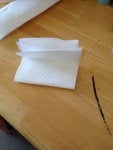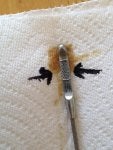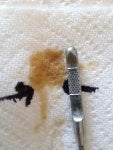(Edit: I'm just trying to share a simple information that might help someone. It's disappointing that the first reply is condescending and rude.)
I agree with other posts that the combination of clean oil and a water-like viscosity can make reading the oil level on the dipstick difficult.
Here's a trick.
I agree with other posts that the combination of clean oil and a water-like viscosity can make reading the oil level on the dipstick difficult.
Here's a trick.
- Fold a paper towel.
- Pull out dipstick and whipe it with a different towel.
- Reinsert dipstick and pull it out again.
- Put dipstick in the crease of paper towel and squeeze it.
- Look at oil stain on paper towel next to dipstick. That's your oil level.







